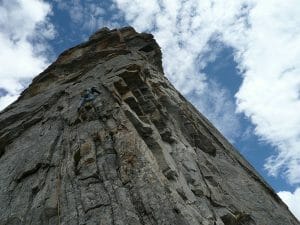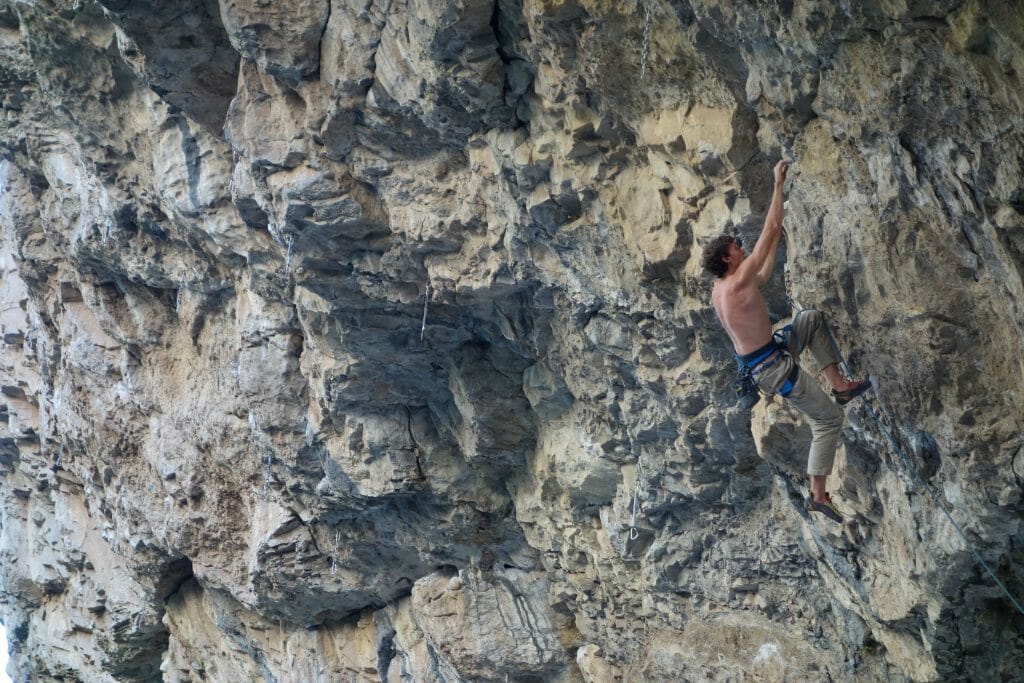Watching a master’s seemingly effortless performance of any high-skill activity, from dance to music to athletics, leaves us slack-jawed time and again. Is it just good genes? Does he avoid some of your favorite vices, like beer and ice cream? Or is it something else, something that should be intuitively obvious but is often the last place we think to look…
Only Perfect Practice Makes Perfect
Here’s something of a mantra that we’ve been sharing with our athletes for years now: “If you practice it wrong, all you do is get really good at doing it wrong.”
Professional athletes make it look so easy. Another deep three from Steph Curry; a perfectly aimed bullet from Tom Brady; Adam Ondra waltzing up the Dawn Wall with less struggle than you spent on your last bout with 5.11b … in the gym. How do they do it?
We learn skills though repetition, for better or worse. Your brain has an amazing ability to acquire new skills. Think of a baby learning to take its first steps. What you are witnessing is myelination at work. With repeated attempts to solve the balance and locomotion problems of standing and walking, the baby’s brain is continually refining the correct motor units to recruit, the force with which to contract those muscles, and the proper sequence to fire them. When the wiring and firing patterns are in their earliest stages, the movements are uncoordinated and the baby falls. But after some number of tries, the brain figures out a better recruitment and firing pattern and the baby walks. From that moment on, the motor patterns just keep getting better and better until these movements are done unconsciously. Every motor skill you have acquired in your lifetime, from holding a pencil and writing your name to sending your favorite 12c, has occurred in just this way.
Myelination: Making Hard Things Easy
The answer to making hard things easy lies in myelination, the body’s response to repeated nerve firings. When your brain uses certain nerve-firing patterns, an insulating substance called myelin builds up over those nerves.
Myelin acts as nature’s electrical insulation, analogous to the plastic wrap covering electrical wiring. The better the myelin insulation, the less “leakage” of the electrical nerve signal and, hence, the more efficiently the signal is transmitted to the muscle and less wasted muscle enervation occurs. When we see rapid strength gains (sometimes in one training session), we are not seeing a gain in actual muscle size. We are seeing an improvement in the recruitment patterns that fire more of the “right” muscle fibers while deactivating fibers that are working against the desired movement goal. As the brain learns which motor units (the motor-nerve and muscle fibers it activates) to fire in which order to produce the desired movement, the thicker the myelin sheath grows around those nerves. The result, of course, is that the skill becomes ingrained, and can be recreated more efficiently the next time you try it.
Motor skills can be artificially lumped into two general categories: gross and fine. Gross motor skills are those that recruit a large muscle mass for typically large joint movements (like a bicep curl). Fine motor skills are those that typically control small ranges of motion but do so to a high degree of precision and control. Like playing a piano. In the real world these two things get combined in almost all athletic movements. Think about dynoing for a tiny edge: a large muscle mass that must all be controlled to a very fine degree if you hope to stick the move.
How the Body Learns through Repetition
Athletic movements like climbing involve a staggering number of nerve impulses to fire the right muscles in the right order with the right amount of force across many of the body’s joints. When we are first learning a skill this coordination is controlled consciously in the frontal cortex of the brain. The processing time and control of these nerve firings is slow and crude, resulting in clumsy and often weak movements, like that baby taking its first steps. It may take hundreds of well-coordinated dynos to really develop the complex web of motor patterns to master that type of move.
The mastery of complex skills means that the brain develops a vast repertoire or catalogue of movement solutions. The higher the skill level, the quicker and more easily the practitioner can sort through that catalogue (with no conscious thought) and solve the movement problem in front of her. When the master looks up at the next several feet of a climb, the movement solutions that are most suitable quickly come to the fore and execution of the optimal one is nearly automatic due to myelination. This is why rehearsing climbs makes them easier. It’s the same reason gymnasts practice their routines.
As the wiring becomes more insulated, less effort is required. To use a computing analogy: Less computing power is needed, thus freeing up more memory for doing other things. The last time you were at the crag on your warm-up route, you and your belayer were able to carry on a fun banter as you effortlessly cruised the route. Or maybe you were already thinking about the moves of your project. You didn’t need to be focused because the motor pathways needed to climb well below your limit are so hardwired your efficiency is already sky high. Just like you do not need to “think” about walking any longer. But when you got on that project and approached the crux move you were NOT thinking about going to dinner at that nice little Mexican place after you sent. These “at your limit” motor pathways are not hardwired yet and you are not efficiently using them. They need more practice.
Deep Practice
We make the transition from clumsy baby steps to perfect pirouettes through Deep Practice—the name neuroscientists have given to the repetitive skill acquisition process where directed and perfected movement coordination is the central component. You try, you fail, you correct, and you try again until the desired skill is developed. Then you practice it over thousands of near perfect repetitions to “hardwire” the neural connections. This new skill/movement solution no longer needs conscious control, and thus becomes more fluid, powerful, and efficient. You have mastered it. It may get rusty and covered in cobwebs, but that wiring and its myelin will still be there. That’s why good climbers can come off the couch and still pull impressive moves after long layoffs. They may not be fit but their motor nervous system still knows how to make the moves.

Coaching: The Way to Better Myelination
The last thing you want to do is hardwire imperfect techniques and skills that will actually hold you back from excelling in your sport of choice.
Myelination is as good a justification as any we’ve come across for seeking out coaching. Whether you do it informally through mentors or friends, or whether you seek professional help to develop your skills, what is inarguable is that coaching helps. Think of it as laying the foundation for proper practice, which will then lead to the myelination of the motor units associated with the right movements, instead of the wrong ones.
This is why in our training plans for rock, ice, and mixed climbing, we lay out specific skill-practice workouts. Here is a sample from Josh Wharton’s 4-Week Beginner to Intermediate Rock Climbing Training Plan. The workout is two 20-minute blocks of continuous climbing with a 20-minute rest interval in the middle. After describing the types of routes that would work for this drill, Josh adds:
The purpose of this workout is to build both a climbing endurance base, as well as movement vocabulary.
Special workout focus today: Pacing. Different types and styles of climbing demand different pacing. On difficult low-angle terrain, it’s generally necessary to climb slowly to look for and find holds, determine the best sequence, and transfer weight carefully onto tiny footholds. On vertical to slightly overhanging terrain a fast-slow-fast pace is often best; climb quickly through cruxes, but take advantage of good rests to recover and scout the upcoming terrain. On overhanging terrain it’s generally best to climb quickly throughout the route to minimize forearm pump, and only stop to rest at best-possible resting positions with the largest holds. Practice your pacing while climbing, climb the same route both slowly and quickly, and note how it affects your forearm fatigue. The eventual goal is to maintain high-quality technique, even while climbing quickly. Watch a video of Adam Ondra to see what I’m talking about!
The workout is not only training rock-climbing-specific endurance, but it is providing a very clear skills focus. This gets back to the idea of perfect practice. It’s not productive for a coach to say: “Climb really well for 20 minutes.” What is more useful is for that same coach to give you one thing to think about and practice—and practice it deliberately, consciously, and well. Do that, and myelination will do the rest.

